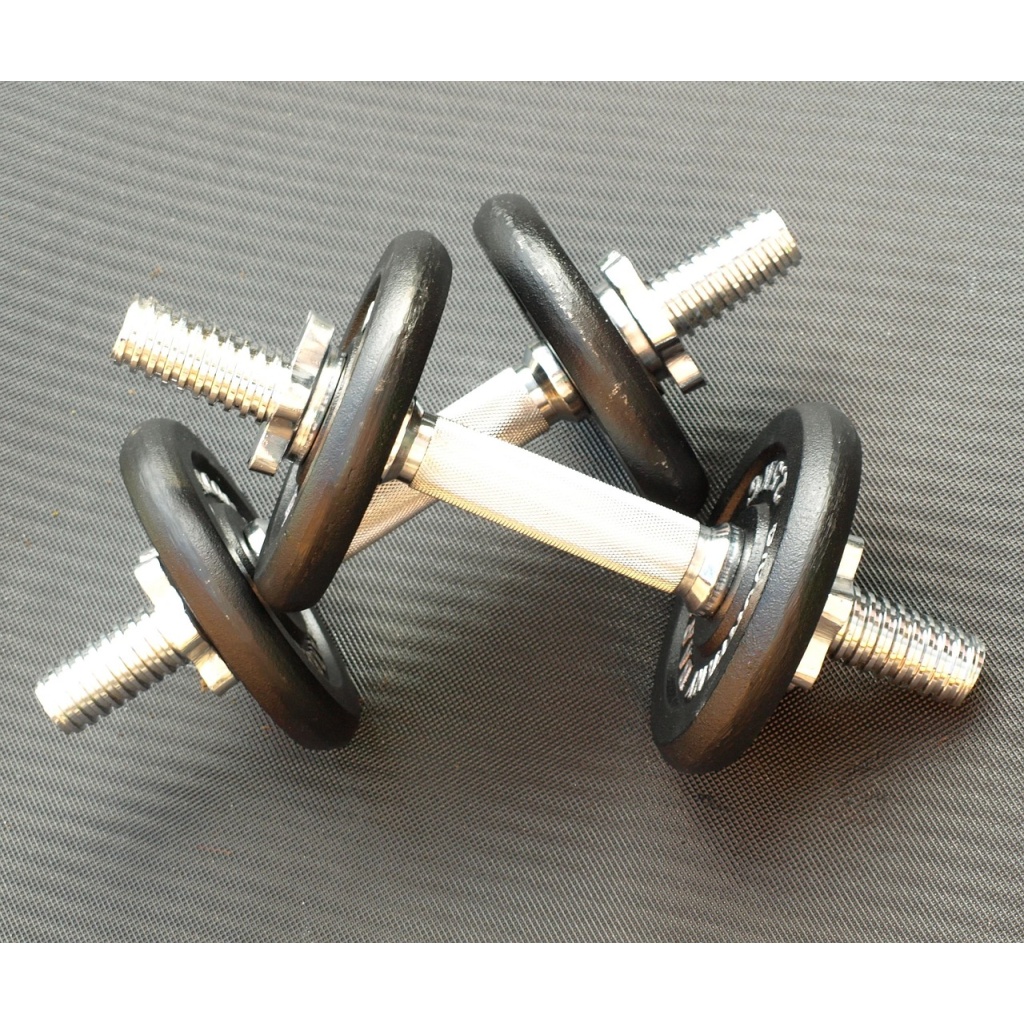Benefits of strength training backed by science
There are many benefits to strength training that can improve your health.
1. Makes you stronger
Strength training helps you become stronger.
Gaining strength allows you to perform daily tasks much easier, such as carrying heavy groceries or running around with your kids (3Trusted Source, 4Trusted Source).
Furthermore, it helps improve athletic performance in sports that require speed, power, and strength, and it may even support endurance athletes by preserving lean muscle mass (3Trusted Source, 4Trusted Source).
2. Burns calories efficiently
Strength training helps boost your metabolism in two ways.
First, building muscle increases your metabolic rate. Muscles are more metabolically efficient than fat mass, allowing you to burn more calories at rest (5Trusted Source, 6Trusted Source).
Second, research shows that your metabolic rate is increased up to 72 hours after strength-training exercise. This means that you’re still burning additional calories hours and even days after your workout (7Trusted Source, 8Trusted Source).
3. Decreases abdominal fat
Fat stored around the abdomen, especially visceral fat, is associated with an increased risk of chronic diseases, including heart disease, nonalcoholic fatty liver disease, type 2 diabetes, and certain types of cancer (9Trusted Source, 10Trusted Source, 11Trusted Source, 12Trusted Source).
Multiple studies have shown the benefit of strength-training exercises for reducing abdominal and total body fat (13Trusted Source, 14Trusted Source, 15Trusted Source).
4. Can help you appear leaner
As you build more muscle and lose fat, you will appear leaner.
This is because muscle is more dense than fat, meaning it takes up less space on your body pound for pound. Therefore, you may lose inches off of your waist even if you don’t see a change in the number on the scale.
Also, losing body fat and building stronger and larger muscles showcases more muscle definition, creating a stronger and leaner appearance.
5. Decreases your risk of falls
Strength training lowers your risk of falls, as you’re better able to support your body (16Trusted Source, 17Trusted Source, 18Trusted Source).
In fact, one review including 23,407 adults over the age of 60 showed a 34% reduction in falls among those who participated in a well-rounded exercise program that included balance exercises and resistance and functional training (18Trusted Source).
Fortunately, many forms of strength training have been shown to be effective, such as tai chi, weight training, and resistance band and bodyweight exercises (19Trusted Source, 20Trusted Source, 21Trusted Source, 22Trusted Source).
6. Lowers your risk of injury
Including strength training in your exercise routine may reduce your risk of injury.
Strength training helps improve the strength, range of motion, and mobility of your muscles, ligaments, and tendons. This can reinforce strength around major joints like your knees, hips, and ankles to provide additional protection against injury (1Trusted Source).
What’s more, strength training can help correct muscular imbalances. For example, having a stronger core, hamstrings, and glutes takes the load off of your lower back during lifting, decreasing your risk of lower-back injuries (23Trusted Source, 24Trusted Source, 25Trusted Source, 26Trusted Source).
Finally, adult and teenage athletes that engage in strength training have a lower likelihood of injury (27Trusted Source, 28Trusted Source, 29Trusted Source).
In fact, one review including 7,738 athletes found strength-training programs reduced the risk of injury by 33%. It was found to lower the risk of injury in a dose-dependent manner, meaning for every 10% increase in strength-training volume, there was a 4% reduced risk of injury (30Trusted Source).
7. Improves heart health
Multiple studies have shown that regular strength-training exercise can decrease blood pressure, lower total and LDL (bad) cholesterol, and improve blood circulation by strengthening the heart and blood vessels (31Trusted Source, 32Trusted Source, 33Trusted Source, 34Trusted Source).
Strength training also can help you maintain a healthy body weight and manage your blood sugar levels. High blood sugar levels are a major risk factor for heart disease (31Trusted Source).
8. Helps manage your blood sugar levels
Strength training may lower your risk of developing diabetes and can help those with the condition manage it better.
Skeletal muscle helps increase insulin sensitivity. It also reduces blood sugar levels by removing glucose from the blood and sending it to muscle cells. As a result, greater muscle mass can help improve blood sugar management (35Trusted Source, 36Trusted Source, 37Trusted Source, 38Trusted Source).
Strength training may also reduce your risk of developing diabetes. One study following 35,754 women for an average of 10 years showed a 30% reduced risk of developing type 2 diabetes among those who engaged in strength training compared with those who did not (39Trusted Source).
9. Promotes greater mobility and flexibility
Contrary to popular belief, strength training can make you more flexible.
Strength training increases joint range of motion (ROM), allowing for greater mobility and flexibility. Plus, those with weaker muscles tend to have lower ROM and flexibility (40Trusted Source).
In fact, a recent review comparing stretching with strength training found they were equally effective at increasing ROM (41Trusted Source).
For best results, ensure you’re completing the full ROM of an exercise — in other words, utilize your full movement potential around a joint. For example, lower yourself into a squat as far as you’re able to go without compromising your form (42Trusted Source, 43Trusted Source).
10. Boosts your self-esteem
Strength training can add a major boost to your self-confidence.
It helps you overcome challenges, work toward a goal, and appreciate your body’s strength. In particular, it can increase your self-efficacy — the belief that you’re able to succeed at or perform a task — which can greatly improve your confidence (44Trusted Source, 45Trusted Source, 46Trusted Source, 47Trusted Source).
In fact, one review of 7 studies in youth ages 10–16 years observed a significant association between strength training and high self-esteem, physical strength, and physical self-worth (47Trusted Source).
Additionally, a systematic review that studied 754 adults showed a significant link between strength training and positive body image, including body satisfaction, appearance, and social physique anxiety (the perception of judgment from others) (48Trusted Source).
11. Makes your bones stronger
Strength training is crucial for bone development.
Weight-bearing exercises put temporary stress on your bones, sending a message to bone-building cells to take action and rebuild bones stronger. Having strong bones reduces your risk of osteoporosis, fractures, and falls, especially as you age (49Trusted Source, 50Trusted Source, 51Trusted Source, 52Trusted Source).
Fortunately, you can reap the bone-strengthening benefits of strength training at any age.
12. Boosts your mood
Regular weight training may boost your mood and improve your mental health.
Multiple studies have shown that strength training may reduce anxiety and boost your mood (53Trusted Source, 54Trusted Source, 55Trusted Source, 56Trusted Source).
Strength training confers multiple benefits to mood regulation, such as increased self-esteem and self-efficacy. What’s more, exercise promotes the release of mood-boosting endorphins, which can play a role in a positive mood (53Trusted Source, 54Trusted Source, 57Trusted Source).
13. Improves brain health
Those who engage in strength training may have better brain health and protection against age-related cognitive decline.
Multiple studies in older adults have pointed to significant improvements in cognitive function (e.g., processing speed, memory, and executive function) after participating in strength training, compared with those who did not participate in it (58Trusted Source, 59Trusted Source, 60Trusted Source, 61Trusted Source).
It’s thought that resistance training has many neuroprotective effects, such as improved blood flow, reduced inflammation, and an increased expression of brain-derived neurotrophic factor (BDNF), which is linked to memory and learning (62Trusted Source, 63Trusted Source, 64Trusted Source).
14. Promotes a better quality of life
Strength training may increase your quality of life, especially as you age.
Numerous studies have linked strength training to increased health-related quality of life, defined as a person’s perceived physical and mental well-being (65Trusted Source, 66Trusted Source).
In fact, one review of 16 studies including adults ages 50 years and older showed a significant correlation between resistance training and better mental health, physical functioning, pain management, general health, and vitality (67Trusted Source).
What’s more, strength training may improve quality of life in those with arthritis. One review of 32 studies showed strength training significantly improved scores in pain and physical functioning (68Trusted Source).
SUMMARY
Strength training provides many benefits, such as a lower risk of chronic disease, better self-esteem, and a reduced risk of injury and falls.
Tips to get the most out of your strength routine
You can employ a few strategies to help you get the most of your strength-training routine.
Start with the basics
If you’re new to strength training, you’ll want to master basic movement patterns first. This will ensure you’re performing exercises safely and effectively (1Trusted Source, 4Trusted Source).
You may wish to start with bodyweight exercises that emphasize balance, core stability, and basic movement patterns (e.g., bend-and-lift, single-leg, pushing, pulling, and rotation actions) (1Trusted Source, 4Trusted Source).
This could include bodyweight squats, single-leg stands, pushups, forearm planks, the bird dog exercise, and plank toe taps.
After you feel comfortable with basic movement patterns, try adding external forces (e.g., weights, resistance bands, and machines). If you’re unsure how to use a piece of equipment properly, speak with a physical therapist or personal trainer.
Choose an appropriate volume and load
The types of exercises you choose will depend on your fitness goals, such as trying to build muscle (hypertrophy) or increasing muscular endurance.
For general muscular fitness, you’ll want to select a weight that allows you to perform 8–15 reps for 1–3 sets while maintaining proper form.
If you’re struggling to perform at least eight reps or cannot maintain good form, the weight is likely too heavy for you (except in advanced lifters with strength goals). On the flip side, if you can easily perform 15 or more reps, you should probably increase the weight.
To gain strength and build muscle, you need to challenge your muscles. Known as progressive overload, you should aim to increase the weight, reps, or number of sets as you become stronger (68Trusted Source, 69Trusted Source).
Avoid overdoing it
While some soreness is normal the day or two after a strength-training workout — this is known as delayed onset muscle soreness (DOMS) — you should not be in pain or unable to perform your daily activities.
It’s a common myth that you need to be sore after a workout in order to achieve results. However, gaining strength and muscle mass are not linked to muscle soreness (70Trusted Source).
Instead, aim to end your sets just before failure, meaning you cannot physically complete any additional reps. This will decrease the likelihood of DOMS while still sufficiently challenging the muscle (70Trusted Source).
Finally, give yourself enough time to rest and allow your muscles to heal and grow. Most people benefit from 2–3 strength-training sessions per week (71Trusted Source, 72Trusted Source).
SUMMARY
To yield the best results, start slow and focus on your form first. As you progress, slowly add more weight or resistance or increase your reps and sets.
The bottom line
If you haven’t tried strength training, now is the time to start.
Strength training provides numerous health benefits, such as a lower risk of heart disease and diabetes, stronger bones, better brain health and mood, and improved self-esteem.
Fortunately, strength training isn’t just lifting weights at the gym. You can get in a great strength-training workout using your body weight, resistance bands, free weights, or even items around your house.
Whether you’re new or experienced, strength training is for everyone
- Personal Training
12 Week Customized Personal Training Program
- Exercise Equipment
Bowflex Adjustable Dumbbells
- Exercise Equipment
Home Gym
- Exercise Equipment
Loop Exercise Bands
- Exercise Equipment
Resistance Bands






